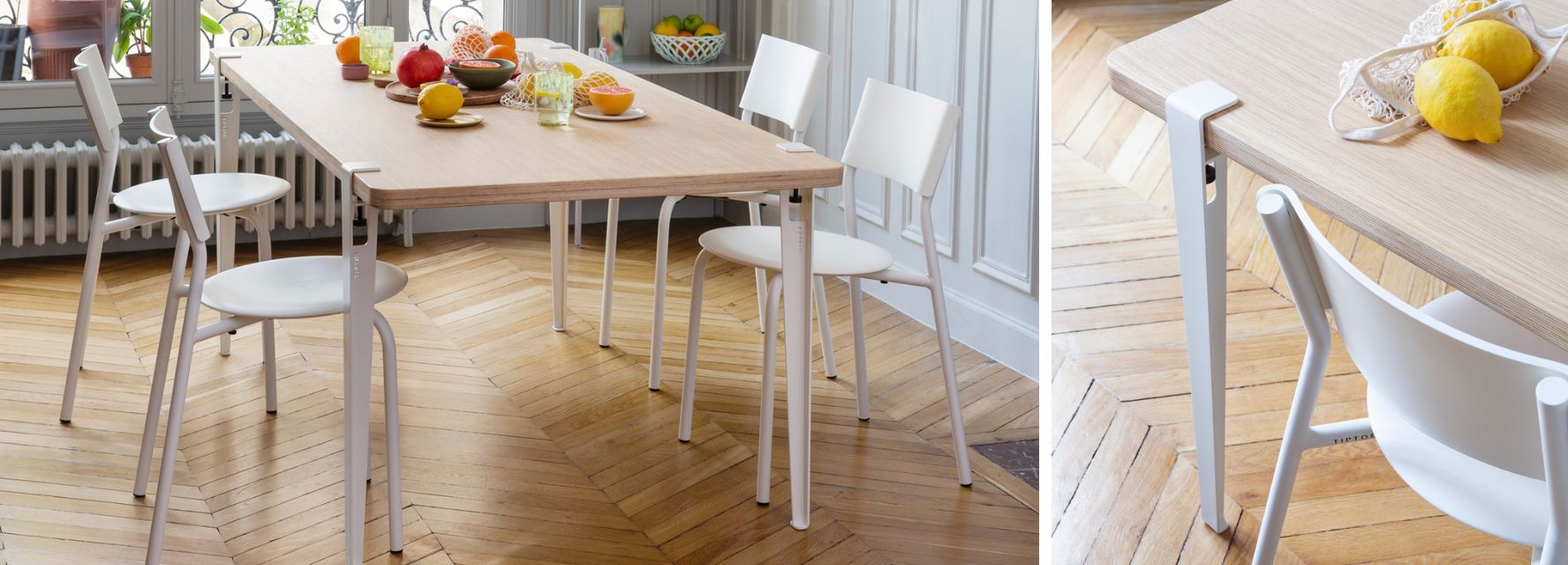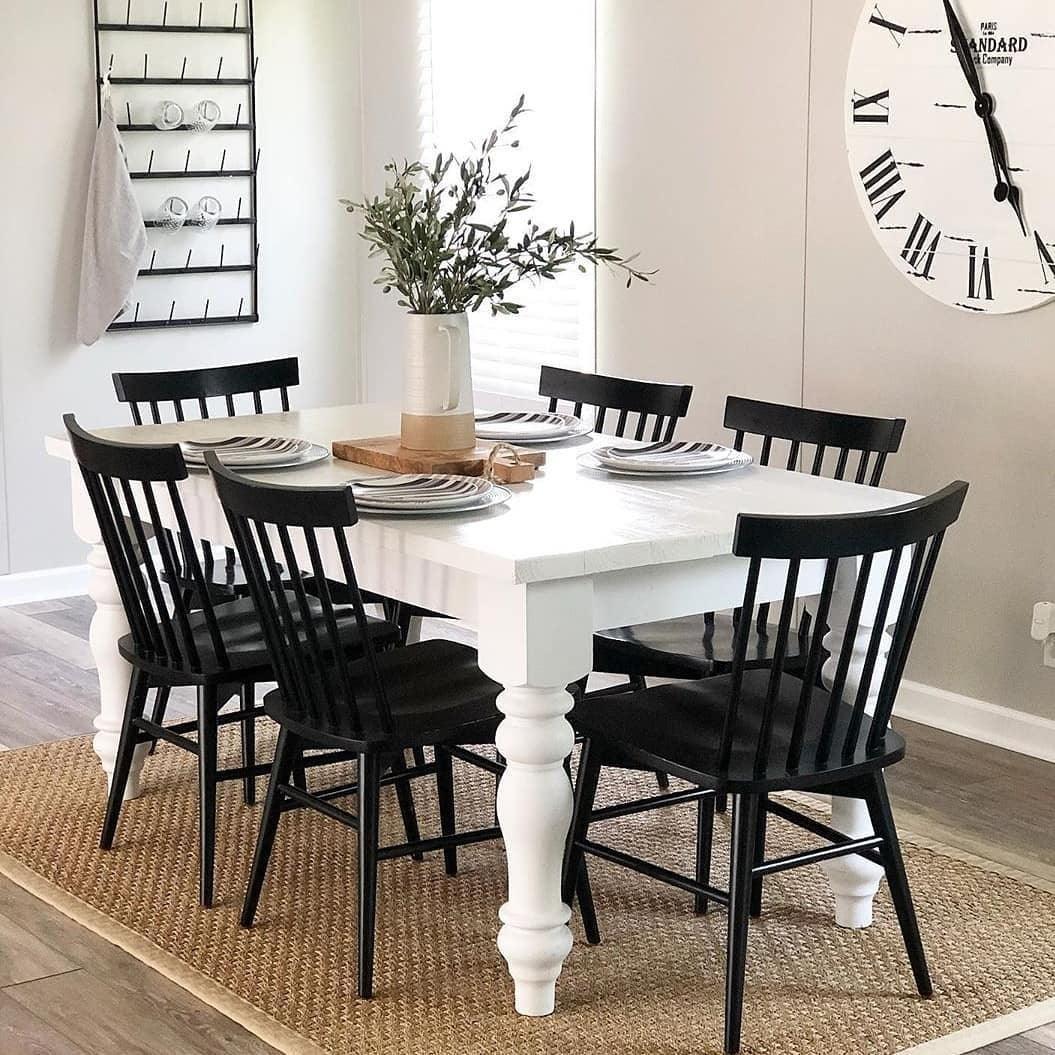Transform Your Dining Space with Stylish Dining Room Table Legs
Transform Your Dining Space with Stylish Dining Room Table Legs
Blog Article
From Standard to Modern: Find the Ideal Eating Space Table Legs for Your Design
The choice of dining area table legs plays an essential role in specifying the general character of your space, connecting the gap in between standard craftsmanship and modern-day appearances. While traditional layouts such as cabriole and transformed legs evoke a feeling of timeless refinement, contemporary designs like barrette and geometric options offer an opportunity for striking visual interest. Reviewing the best equilibrium between these styles needs a nuanced understanding of your existing décor and individual preference. As you consider these aspects, the question stays: just how can you seamlessly incorporate these diverse leg designs to develop a harmonious dining experience?
Comprehending Table Leg Styles
The range of dining room table leg styles can considerably influence both the appearances and functionality of the area. Each leg style contributes unique useful features and aesthetic aspects, accommodating diverse design choices and use demands. Comprehending these styles is important for choosing the best table that aligns with your total interior decoration vision.
For instance, conical legs supply a tidy, classic appearance that can boost an area's style, while pedestal bases supply stability and make the most of legroom, making them suitable for smaller spaces. Barrette legs, a trademark of mid-century modern-day style, present a commercial flair, permitting a ventilated, open feeling. Trestle legs stimulate rustic appeal, giving robust assistance and a sense of timelessness.
Wood legs can bring heat and texture, whereas metal choices frequently convey a streamlined, contemporary vibe. Eventually, recognizing table leg designs is vital for developing a natural dining area that reflects individual design while ensuring practicality and comfort.
Traditional Table Leg Options
When picking dining space table legs, typical alternatives commonly personify timeless elegance and craftsmanship. These layouts reflect a rich heritage and a commitment to high quality, making them suitable for those who value timeless aesthetic appeals.
Among the most famous traditional leg designs is the cabriole leg, identified by its elegant rounded form. This style usually includes attractive makings and is most generally found in Queen Anne and Chippendale furniture. Another popular option is the transformed leg, which boasts a series of smooth, rounded forms that give a timeless appearance while keeping security.
In addition, the straight leg, while straightforward, supplies a unadorned and sturdy structure that can blend seamlessly with a range of tabletop styles. For those drawn to ornate detailing, claw-and-ball feet legs stimulate a feeling of grandeur and can function as a stunning prime focus in any kind of dining area.
Finally, pedestal bases, although not purely legs, supply an alternate typical alternative that permits for sufficient legroom and can be wonderfully sculpted. Each of these standard leg styles adds to the general ambiance of a dining room, weding function with visual appeal.

Modern Table Leg Layouts
Modern table leg styles offer a diverse variety of styles that stress cutting-edge products and clean lines. These layouts commonly prioritize performance while functioning as striking prime focus within an eating space. Minimalist visual appeals prevail, with legs crafted from products such as metal, glass, and crafted timber, which contribute to explanation a ventilated and modern feeling.
One preferred design is the barrette leg, identified by its slim, conical structure that provides security without frustrating the table top (dining room table legs). This style is commonly found in mid-century contemporary furniture and can effortlessly enhance various table shapes. An additional fad is making use of geometric forms, where legs might tackle angular or asymmetrical forms, adding aesthetic passion and a touch of virtuosity

Mixing Designs for One-of-a-kind Rooms
Often, home owners look for to produce distinct dining rooms that mirror their individual style by blending various style elements. This method permits for the consolidation of diverse visual appeals, leading to a harmonious yet distinct atmosphere. Coupling a rustic wooden table with sleek, modern-day metal legs can develop an attractive comparison that raises the area's general charm.
Furthermore, integrating vintage table legs with modern table tops can evoke a feeling of history while maintaining a modern sensibility. Such mixes not only display individual preference yet additionally encourage creativity, permitting house owners to curate an area that really feels both personal and welcoming.
Color plays a critical role in this mixing process; choosing table legs that enhance or contrast with the existing color design can improve aesthetic rate of interest. Whitewashed legs can soften the daring of a dark table surface, creating a visit our website well balanced visual.
Tips for Choosing the Right Legs
Choosing the right table legs is important for accomplishing both capability and aesthetic charm in your dining room. Begin by considering the general design of your area. Typical settings gain from legs that include detailed makings or turned designs, while modern spaces may call for sleek, minimalist styles.
Following, assess the height and stability of the legs. dining room table legs. Conventional table vary in between 28 to 30 inches click site in height, so guarantee the legs match this dimension for convenience. Furthermore, durable products, such as wood or steel, can boost security and long life
Review the leg form as well-- options include straight, tapered, or pedestal layouts. Straight legs supply a timeless appearance, while conical legs can include a touch of style. Pedestal bases provide sufficient legroom and are suitable for smaller sized areas.
Final Thought
In recap, choosing the suitable dining area table legs needs careful factor to consider of both modern-day and standard styles. By balancing leg style, elevation, and material with the overall decor, a cohesive and welcoming environment can be attained.
The range of dining area table leg styles can dramatically influence both the visual appeals and capability of the space. Ultimately, comprehending table leg designs is important for producing a cohesive dining location that reflects individual style while making sure practicality and convenience.One of the most iconic typical leg designs is the cabriole leg, characterized by its stylish bent shape. Straight legs provide a timeless look, while conical legs can include a touch of beauty.In summary, selecting the excellent dining area table legs needs mindful consideration of both modern and standard designs.
Report this page